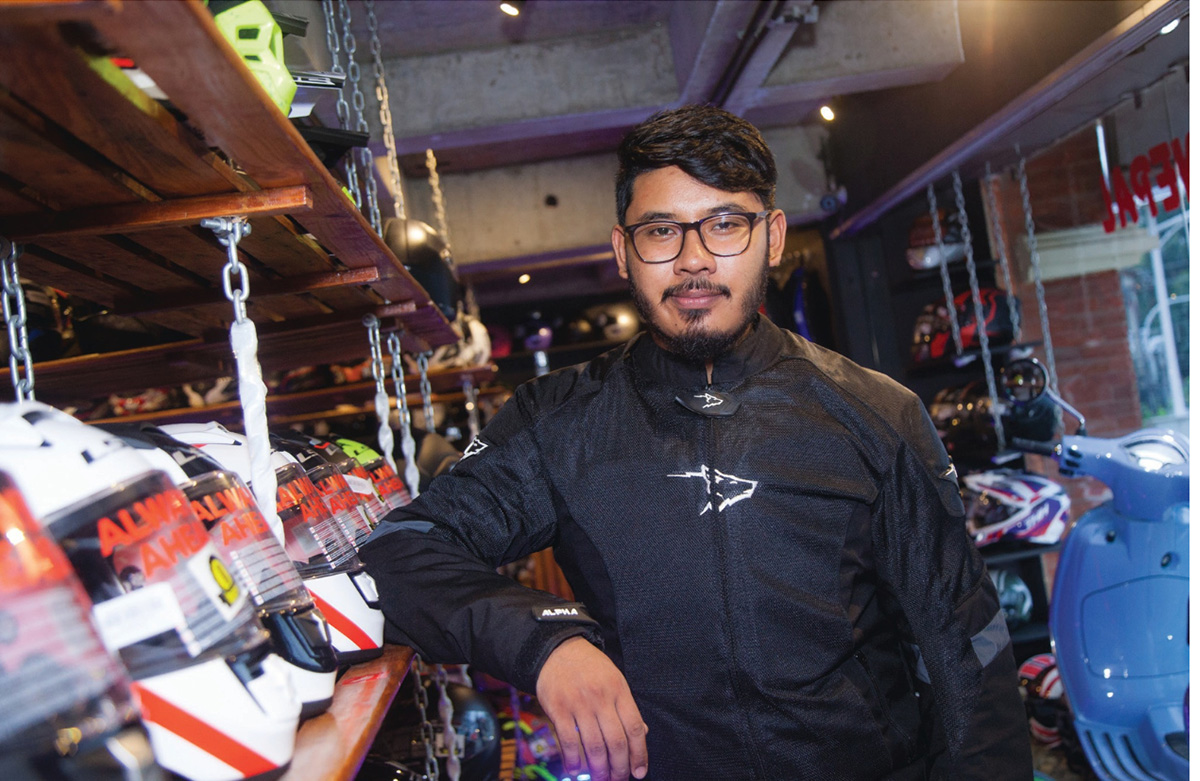
Motorcycle helmet is vital riding equipment. There are a wide variety of helmets available in the market, whether it is half or full, cheap or costly, original or high copy, because of which choosing the type of helmet to buy has become a dilemma for many.
B360 has listed some useful tips on how to buy a motorcycle helmet with the help of Sajal Joshi, CEO of Helmets Nepal and Dr. Sanjaya Karki, Emergency Physician and Head of Department of Emergency Medicine at the Nepal Mediciti Hospital.
The type of bike you own should determine the choice of helmet Firstly, people should choose a helmet according to their motorcycle and/or their riding preference. It is because certain types of helmets are made for certain types of motorcycles. Helmets are not just a style statement, they also help riders in visibility, aerodynamics and comfort, which is why there are multiple options available in the market.
Don’t settle for looks alone The main reason for wearing a helmet while riding is for safety of your head to neck regions in case of any type of accident. Keeping this in mind, the most important part of the helmet is not the outer shell. Usually people make their purchase based on looks. This is completely wrong! And remember no sales person will ever tell you that any of their helmets is not strong.
“Riders should choose a helmet by inspecting the inner shell of the helmet which is called Expanded Poly Styrene (EPS) foam. EPS foam is the main shock absorber and the most important aspect of a helmet no matter what the outer shell is made up of,” states Sajal Joshi, CEO of Helmets Nepal.
He further shares that the law of thermodynamics states that force can neither be created nor destroyed but can be transferred from one body to another, this also applies to helmets. If the EPS foam is strong, then the force created by impact is absorbed by the EPS foam and if the EPS foam is weak, then the total force isn’t absorbed by the EPS foam which means the force also impacts the rider’s head creating serious head injuries. You need to further assess your choice based on your use. If you are a commuter riding on low speed, even low or medium range EPS foam helmets can protect you. However, if you are a high speed rider, helmets with higher EPS foam density should be the pick.
Check for Certifications Apart from EPS foam density, check for certification before buying a helmet. If there is a certification tag behind the helmet, it proves that the helmet has been tested properly in every aspect: outer shell, inner shell, inner padding and visor.
“Helmet certification such as DOT (United States Federal Government’s Department of Transportation), Snell M2015, ECE 22.05 and ISI (Indian Standards Institute) should be checked for while buying a helmet,” said Joshi.
The Right Size Matters Size is an important factor to keep in mind while choosing a helmet. It is a must to wear a helmet that is according to your head size.
Useful Tip: To know your perfect helmet size, wrap a measuring tape around your head, about half inch above your eyebrows, above your ears and around the back of your head at the largest point. Compare your head size with the motorcycle helmet manufacturer size to find a match.
In absence of a measuring tape, you can wear the helmet and if the helmet moves or your fingers fit easily between your head and the helmet, you’ll likely need a smaller size. The most important point is that the helmet should fit cozily around your head and face with no pressure points. If preferred, the cheek pads can be adjusted afterwards for better fitting.
Price Factor “Price should be considered while buying a helmet, but avoid going for low quality or counterfeit helmets just because they are cheap,” said Joshi.The price of a helmet whether cheap or costly is tagged according to the materials used and features in a helmet. The more expensive the helmet, the more comfort, features, and most importantly, the protection is greater. But, this doesn’t mean that reasonably priced helmets offer no protection at all. There are wide selections of helmets available in Nepal in various price ranges.
Know when to replace and take care of your helmet When a helmet gets dirty, you have to change or wash it. “People wear the same helmet for months and years without ever washing the inner padding or changing their helmet which is a very unhealthy practice,” said Joshi. He also stated that although the average life span of a helmet which the manufacturer gives is for 4-5 years, in actuality, it is best to change your helmet every 2-3 years.
Primarily, people wear helmets while riding a motorcycle or a scooter because it has been made compulsory by the traffic police. It is a rarity to see riders using other safety riding gears like jacket, gloves, pants and boots. It may also be because in Nepal riding a motorcycle is more of a necessity than passion. Other reasons can be because of the weather, economy and lack of awareness about riding gears. People should realise that riding gears are for their own safety. It doesn’t matter if the rider drives safely or slowly, accidents can occur for other reasons also. It is better to be safe than sorry.
[su_note note_color="#fefec0"]
 What type of motorcycle accident cases do you witness at your hospital?
What type of motorcycle accident cases do you witness at your hospital?
There have been several cases in which the rider is less injured with minor bruises to severe cases in which the rider is injured from head to toe resulting into deformities in the body. Injuries such as head, chest, abdomen, limbs or just soft tissue injuries can occur in case of accidents. In most cases, I have witnessed head and limb injuries.
What type of helmet should riders wear?
It is always better to wear a full helmet than half helmets because it covers your whole face and the skull areas. I would also recommend people to always clip on the strap of the helmet before riding. Small things like these can save you from major incident to your head!
Previous there was a rule that pillion riders should also wear a helmet, but it was withdrawn. From an injury point of view, how vulnerable are pillion riders?
Pillion riders must wear helmets. It should be made mandatory. In case of an accident both are affected. Riding a motorcycle is risky but it is a necessity here in Nepal. In a majority of cases, the pillion rider is the one with major head injuries because of not wearing a helmet. We don’t have accurate data but we are doing an in-house pilot project at Nepal Mediciti Hospital in which this is also a topic of research.
Dr. Dietmar Otte did a study on Helmet Impact and published the data (the diagram below). Do you agree with the results?
This study emphasises the importance of wearing a full helmet because according to it the major impact happens on the mandible areas. I agree with this.
[/su_note] 



-1765706286.jpg)
-1765699753.jpg)

